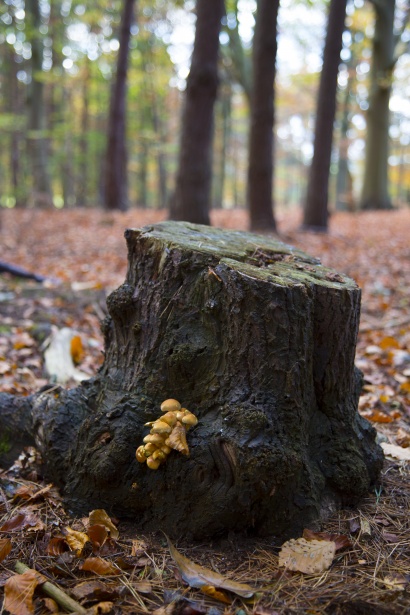Feb. 22, 2023- Recent winter storms in Texas will leave its lingering effects for months. Many Texas trees are still showing signs of stress from last year storms. Tufts of leaves give some a patchy, inverted look – while others are losing vast amounts of bark, or seemingly dying overnight – leaving many Texas home and land owners wondering what they should do.
Texas A&M Forest Service send a unified message across the state: wait. More specifically, wait until mid-July before cutting down leafless trees. The good news is that the vast majority of trees that will be late to leaf out will mostly, if not fully, recover. Sickly or struggling trees are harder to come by, and time has lent a level of clarity as to the state and likelihood of survival for most struggling trees. Now the history repeats again and it is time to wait again to make a decision: to remove their trees, or not to remove their trees.
THE SHORT ANSWER
According to Texas A&M forest service, if your tree is bare mid -summer and hasn’t put out a single leaf then it is almost certainly dead. Waiting a few more weeks, or even months, will determine this. And unfortunately, this applies across the board: even to palm trees.
If that is the case for any of your trees, it is probably then time to consider how and when to remove your tree. The short answer: when convenient, and with the help of a professional or certified arborist.
THE LONG ANSWER
By this point, trees are still completely bare. The more common scenarios that arborists and foresters found across the state after last year storms were trees with poor or patchy canopies.. Imagine a circle around all of your tree’s branches, Twenty-five percent or more of that circle should be filled in with leaves. If not, that tree is most likely going to die, and it is worth planning to remove it. If more than 25% of that circle is filled with leaves, there is still a chance for full recovery. One way you can monitor your tree’s progress is by taking a photo of your tree’s canopy as soon as possible. Keep that photo—remembering the angle you took it from—and then wait for next spring. Once the tree has fully leafed out, take another photo from that same spot, and compare the pictures for improvements. If there is more foliage next spring, that means the tree is in recovery.
OTHER COMPLICATIONS
Patchy foliage isn’t the only mark of a stressed or struggling tree. Landowners can also find deep, wide cracks in the trunks of their oak trees. These are an exaggerated manifestation of the more typical frost cracks or “radial shakes. Frost cracks are caused by a tree’s inability to endure expansion and contraction of the bark and wood that results from the freezing of water inside of the tree. Water expands when it freezes, and since trees are more than 50% water, trees that had started coming out of dormancy leading up to winter storms were particularly vulnerable to frost cracks. As the water inside their trunk and branches froze, it expanded. But with their outer-layer and bark also frozen, the outside of the tree wasn’t able to expand with the inside – leading to ruptures in the trunk and bark.
Many of these cracks can only be partially visible, if not invisible, following the winter storm. The surge of summer heat, however, can exacerbated those cracks, making them more visible in some trees. On the flip side, bark is still essential for protection against pests and diseases. Trees with multiple cracks or lots of exposed wood are unlikely to recover, and trees with few but deep cracks should be monitored closely.
The few exceptions are lacebark elms, sycamores and crape myrtles. These are more likely to survive since, in most cases, the damage appears to be a shredding of the outermost layer of bark, sparing the wood itself. However, you should still watch closely for oozing discharge and other signs of stress, such as browning foliage or expanding cracks, leading up to next spring.
ROOT SHOOTS
Surprisingly, a large number of trees, and a variety of species, will be sprouting up shoots from the base of their trunks and root systems. While this might seem like a desperate attempt from the tree to stay alive, it’s actually a great way for landowners to grow and nurture a tree from a tiny sapling back to a fully grown adult.and it can mature much quicker than usual.
You will still have to remove the old tree, but this method should save you the cost of grinding its stump, as well as buying and planting a new tree: which would likely grow at a slower rate than your root shoots, anyway. Crape myrtles, in particular, can grow back with astounding speed.
TREE PRUNING AND REMOVAL
There are few decisions more difficult than when or how to remove a tree from your property. Trees have immense sentimental and monetary value. But their worth is rarely more than your roof, your house, or your life.
You can start by removing dead branches, or by pruning back the dead ends of branches on trees that experienced significant dieback. These branches are more likely to break off and injure property or people than the main body of the tree. It is still a dangerous and difficult task, It is highly recommend enlisting the service of an arborist.
MOVING FORWARD
So don’t overthink which tree to plant next, or whether you should remove a tree before its time. Simply remove the ones that are dead or dying, take care of the trees that are still living as best you can, and look forward to next spring, when they will hopefully come back in full. For more information on this or any other agricultural topic please contact the Hopkins County Extension Office at 903-885-3443 or email me at [email protected].








